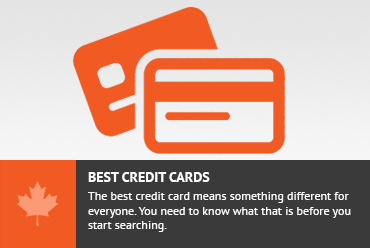This month’s reader question is very common; do you get out of debt before you travel? Or hit the road even if you’re not free and clear? Regardless of which comes first, here is the most effective strategy to clear your debts, along with some essential life planning and debt management tips to help you answer the travel/debt question for yourself.
Dear Nora,
I’m young, and I have a bunch of credit card debt and student loans. I know I have to get out of debt, but I also want to travel the world, before I get bogged down with life and a house and family and stuff. What do I do? – Joyce
The answer to this question can vary depending on your situation and your answers to the following questions:
- How much debt do you have? (The bigger the debt, the more important it becomes to stay home and at least get control of it first).
- How long do you want to travel for? (With debt hanging over your head, a lifestyle change is harder to justify than a short trip).
- Will you have income while you travel? (Having a stream of income that can cover your debt payments as well as your expenses opens up more opportunities to hit the road).
- How much will your travels cost? (If you’re planning a luxury trip that will dig you even deeper in the hole, think again).
But on the whole, I believe it’s very important to get control of your debt before you travel the world. You will have more options, both on the road, and in life, if you aren’t shackled to credit card payments. You’ll also save mega interest dollars, which in turn, can fund future travels. (See also: 11 Financial Moves in Your 20s That Set You Up for Life)
THE MOST EFFECTIVE DEBT PAYMENT STRATEGY
Regardless of what you decide to do, here is the most effective strategy to pay off debt in a satisfying, easy to maintain, and cost-effective manner.
It’s commonly referred to as the Debt-Snowball strategy, and is the best when you are juggling lots of different debt payments. Here’s how it works:
Step 1: Make a List
List all your debts, including the grand total, interest rate, and minimum payment.
Let’s say you’re working with something like the following:
- Credit Card A: $2,500, 18.9% interest, minimum payment $100
- Credit Card B: $3,000, 16% interest, minimum payment $120
- Credit Card C: $650, 22% interest, minimum payment $26
- Personal Loan (5 year): $4,000, 10% interest, minimum payment $85
- Student Loan (10 year): $12,000, 8% interest, minimum payment $150
Total Debt: $22,150
Total Minimum Payments: $481
Step 2: Lower Your Rates
Call every lender and tell them you are implementing some serious strategies to pay off your debts, and ask them if they would be willing to lower their interest rates to help you get ahead. The worst they can say is no, and while the chances may be remote they will do anything for you, it’s worth the few minutes spent trying. You never know.
Step 3: Determine the Monthly Amount You Can Pay Towards Debt
In an ideal world, you track your expenses and income, and thus you have a working budget that allows you to realistically commit X dollars towards your monthly debt payments.
Step 4: Find a Little Bit (or a Lot) More Money
Let’s say you determine that you have $500/month to put towards your debts. Since that’s only a tiny bit more than your minimum payment of $481, you’re not going to get anywhere. Here’s exactly how grim it will be:
- You will be in debt for the next 10 years. And it’s not just your student loan; at minimum payments, credit cards A&B will take nine years to pay off).
- You will pay almost $10,000 in interest alone.
It’s time to tighten that belt and really commit to paying off your debts. Most of us can save money on lifestyle expenses, from meals out, to morning lattes, shopping sprees, and more.
Re-evaluate all your bills to see where you can save money; many people pay exorbitantly for their cell phone plans, when there are some really inexpensive options. (Read this article to see how I pay less than $30/month for phone and data)
And perhaps this is a chance to clean house – literally! Ever considered selling some of your stuff?
After taking a serious look at your financial situation, let’s say that you can now commit $650/month towards your debts. Congratulations! Continue on to the next step.
Step 5: Pick a Debt
Pick one of your debts to target and eliminate. You have two options here:
- Option A: Target highest-interest debts first. Financially speaking, this is the most effective debt repayment strategy, ultimately minimizing your interest payments and reducing your debts quicker.
- Option B: Target smaller debts first. Let’s say your highest-interest debt is also your largest amount. But you also have a bunch of very small debts that you’d feel better about if you could get them out of the way. In the name of reducing the sheer number of monthly debt payments you have and getting a sense of accomplishment, sometimes this is a good option.
In this particular case study, the highest-interest debt (22%) is also the smallest amount ($650), so it makes sense to target Credit Card C first.
Step 6: Make Minimum Payments on All but Your Target Debt
With a monthly budget of $650 for debt, you’ve got an extra $169 above and beyond your minimum payments. Here’s what your payment plan will look like:
- Credit Card A: $100
- Credit Card B: $120
- Credit Card C: $195 ($26 minimum payment plus $169 extra)
- Personal Loan: $85
- Student Loan: $150
By your fourth month, you will have paid off Credit Card C! Now you have a full $195 extra to start killing your next debt.
Step 7: Do it Again
With Credit Card C out of the way, next up is Credit Card A, as your next highest-interest debt. Here’s the payment plan:
- Credit Card A: $295 ($100 minimum payment plus $195 extra)
- Credit Card B: $120
- Personal Loan: $85
- Student Loan: $150
At this rate, you smash it in nine months!
Step 8: And Again
Next up: Credit Card B.
- Credit Card B: $415 ($120 minimum payment plus $295 extra)
- Personal Loan: $85
- Student Loan: $150
Seven months later, it’s gonzo.
Step 9: You Get the Idea
You’ve now eliminated all your credit card debt! Woohoo! Here’s where your remaining loans stand, having made minimum payments to this point (20 months):
- Personal Loan: $2,800
- Student Loan: $10,500
You started off with over $22,000 in debts, and now you’ve cut it in almost half, in a little over a year and a half. Watch how quickly the rest goes! This is why it’s called a debt-snowball.
New payment scheme:
- Personal Loan: $500 ($85 minimum payment plus $415 extra)
- Student Loan: $150
You just paid off your personal loan in six months. Instead of it being a five-year loan, you just paid it off in 26 months total – less than half the time.
Ready to tackle your student loan? With monthly payments of $650, you’ll have it paid off in less than a year and a half.
Let’s look at some summary numbers:
- Total Time to Pay off All Debts: 3.6 years
- Total Payments Towards Debt: $28,000
You just paid off all your debts in way less than half the time you would have required if you’d made minimum payments, and you saved $5,000 in interest payments.
DEBT MANAGEMENT TIPS
Is your mind blown? This is just the tip of the debt management iceberg. Here’s how to transform your finances from “ow” to “wow”:
Consolidation Strategies
The debt-snowball strategy is just one way of strategically tackling multiple debts. Here are a few more, which you can even combine with the snowball strategy for advanced debt management wizardry:
- Consolidating to credit cards with 0% balance transfer offers (beware of transfer fees, and read the fine print)
- Personal instalment or consolidation loans
You can read more on these (and other) debt consolidation strategies here: How to Consolidate Credit Card Debt in 2018
Credit Management
These tips will help you improve your credit score, as well as your chances of effectively paying off your debt.
Get a Credit Check Part Way Through – If you’re recovering from a bad credit score, making regular payments as part of the debt-snowball strategy will start improving it. If it has improved, you may qualify for a better interest rate or consolidation loan, which could further reduce your overall payments and time frame. Just don’t get a credit check too often, as it can negatively impact your score.
Refinance Your Student Loan – If you’re really drowning in debt, see if you can refinance your student loan. It will take longer to pay off, but student loans typically charge low interest to begin with, so if you can minimize those payments to get ahead with your higher-interest debt, it may be worthwhile. (Click here for info on changing Canadian student loan terms)
Don’t Close Accounts When Paid Off – When you pay off a debt, don’t close the account quite yet. Your credit score will improve if you demonstrate that you can have credit cards without maxing them out. If discipline is an issue, bury your card, or put it in a bag of water and freeze it!
If you’re battling bad credit, check out the following posts:
Bad Credit? 5 Simple Steps To Rebuild Your Credit In 12 Months
4 Types of Credit Cards for Bad Credit
The Top 5 Secured Credit Cards for Boosting Your Score
Debt Psychology
Financial planning is more about psychology than you might think. Get your head in the game with these tips:
Set a Higher Goal – Setting a goal of getting out of debt isn’t sexy. It’s about getting back to 0, which is actually pretty depressing. Instead, set a goal higher than getting out of debt, like taking a trip or having a down payment for a house. This way it gives you something positive to shoot for, and decreases the chances you’ll fall back into debt once you’re out of it.
Budget Realistically – Tightening your financial belt is all well and good, but if it’s not realistic, you’re more likely to fall off the wagon and binge spend. (It’s similar to dieting). Build a little breathing room into your budget, to increase your chances of being able to stick to it.
Create Rewards Along the Way – Each time you pay off X amount of debt or pay off a credit card, allow yourself to celebrate with a predetermined expense/reward. When you’re tackling a mountain of debt, it helps to focus on these benchmarks along the way so you don’t get overwhelmed and give up.
Create Accountability – Debt isn’t something to be proud of, nor is it something to be ashamed of. We’ve all been there. Find somebody to (lovingly) hold you accountable. If they’re also paying off debts, you could even create some friendly competition!
Examine the Cause – Look at why you got into debt in the first place. If it’s a matter of having overspent with nothing to show for your debts, then it’s time to examine your spending habits. Track every penny you spend – it’s a crucial part of budgeting, and doesn’t have to be a drag, with lots of handy apps. (I use Trail Wallet, because it has a great user interface and tracks expenses in multiple currencies which is great for travel).
Technology
There’s an app for everything these days. If you want one to help you repay your debt, check out these recommendations: The Best Debt Repayment Tools and Apps.
Balancing Debt and Saving/Spending
All of this brings us back to the original reader question: do you pay off debt or travel first? There’s still no clear answer. But with the information and strategies in this article under your belt, here are some final considerations:
Don’t Sacrifice Saving – In an ideal world, you can continue to save some money while paying off your debts. Not only will this help you get on the road faster (if that’s your goal), but according to the principles of compound growth, you’d be amiss not to keep saving at least a little bit towards your future, especially if your debt-snowball strategy will take many years.
Consider Taking a Break from Debt – Are you 3/4 of the way to paying off your debts and now battling a mean case of itchy feet? Once you’ve knocked out the credit cards and are left with low-payment low-interest fixed loans (like the student loan), you could consider easing back from your aggressive debt repayment strategy to tackle other financial and life goals – like travel, or saving for a major purchase. Just make sure you don’t dig yourself back into the hole!
Feature photo credit: Steven Millstein
Dear Nora, debt management, debt reduction, debt vs. travel, debt-snowball









